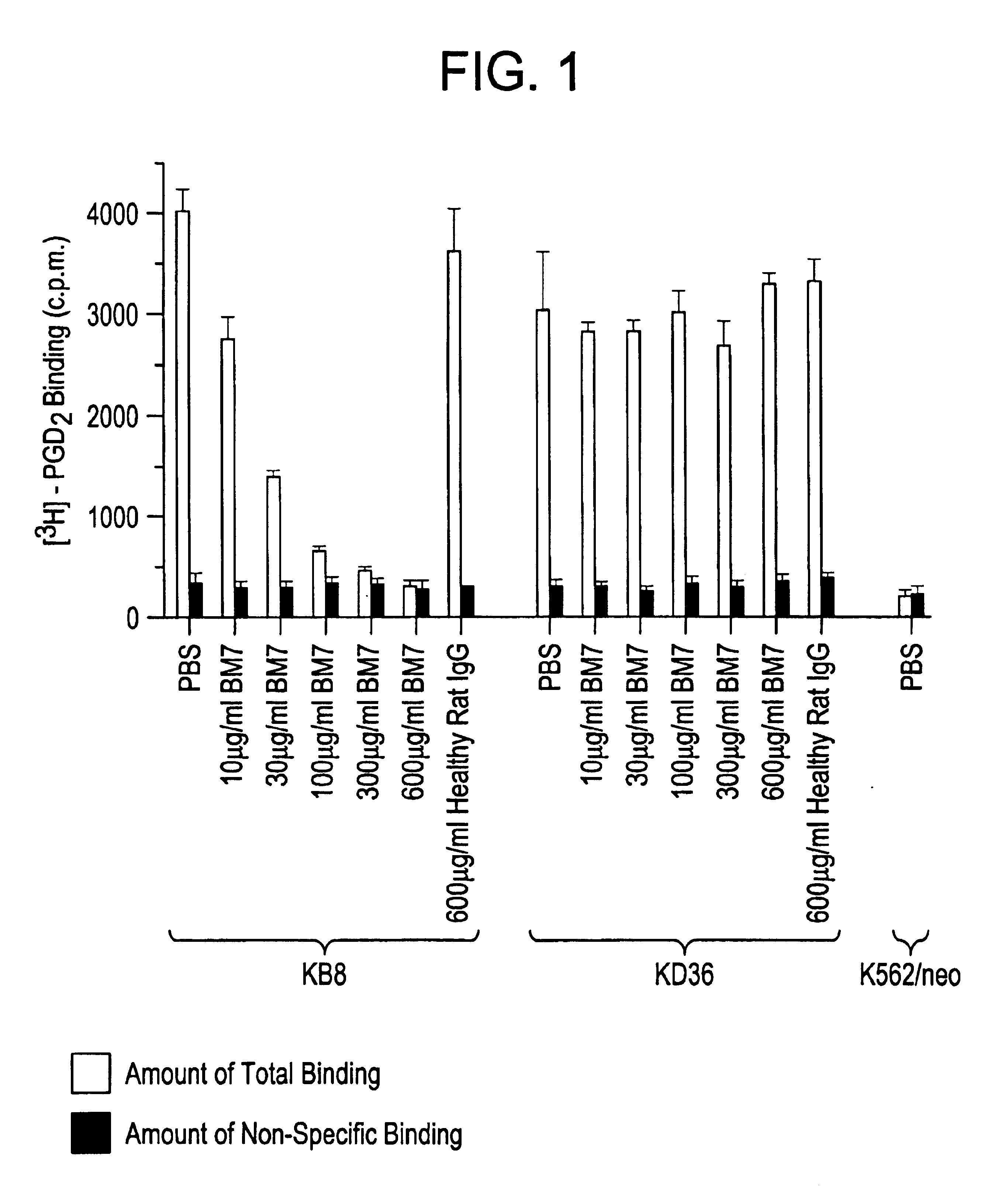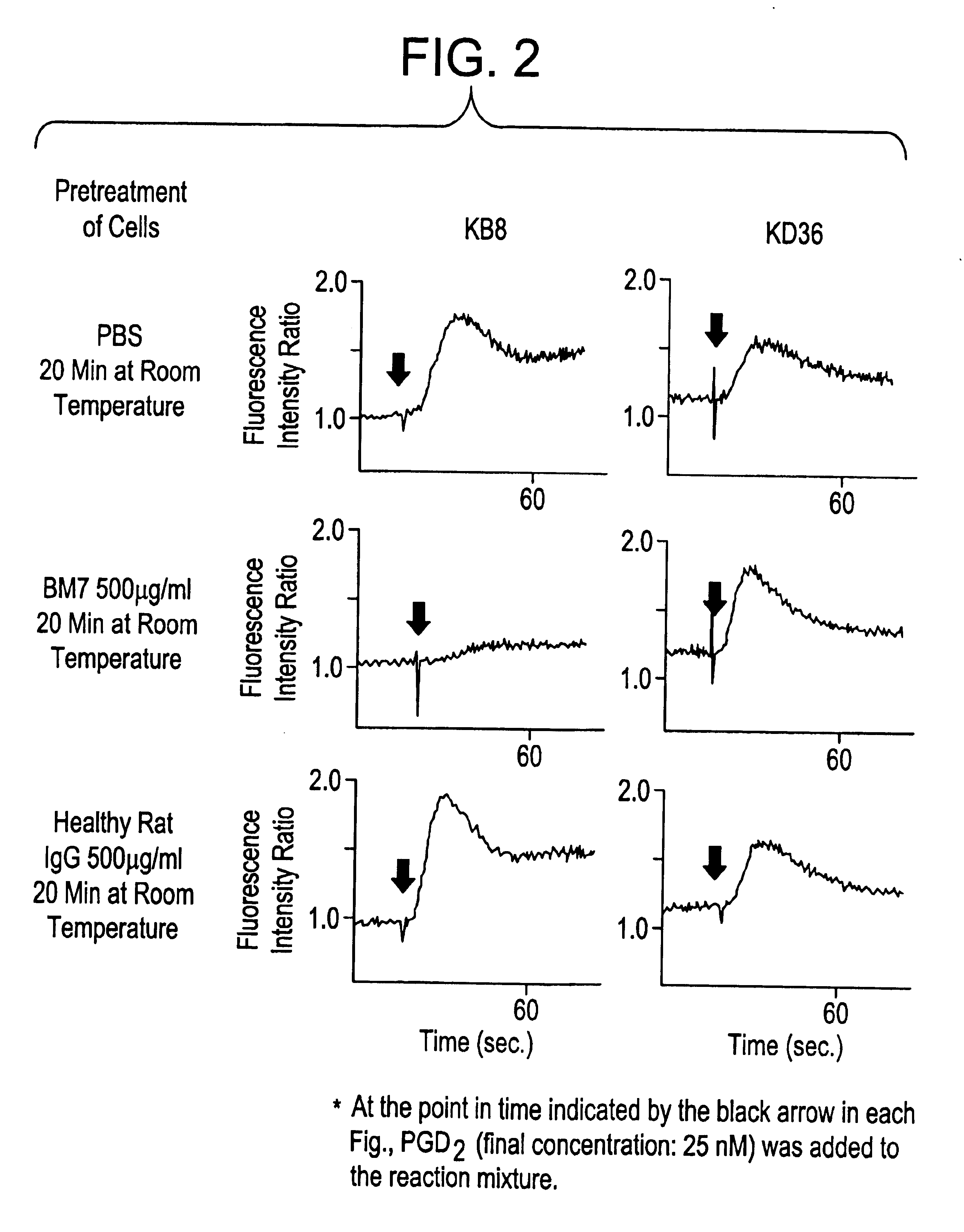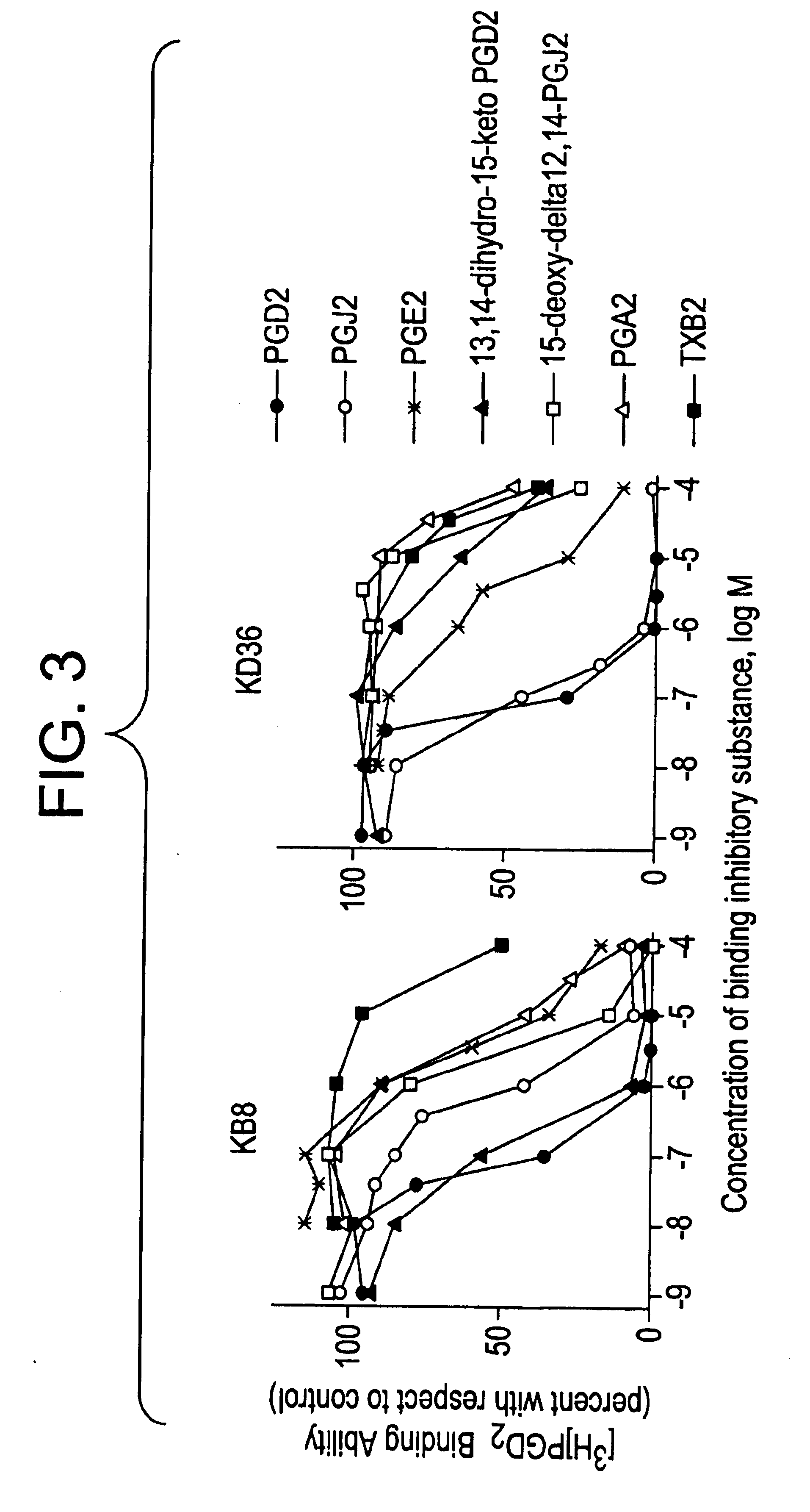Method of identifying properties of substance with respect to human prostaglandin D2 receptors
a prostaglandin d2 receptor and substance technology, applied in the field of identifying substances with specific properties, can solve the problem of restricting the screening or evaluation of drug efficacy or drug efficacy of animal tissu
- Summary
- Abstract
- Description
- Claims
- Application Information
AI Technical Summary
Problems solved by technology
Method used
Image
Examples
example 1
[0051]Preparation of a Cell in which Human CRTH2 is Expressed
[0052]Human CRTH2 gene expression plasmid pRc / B19 was prepared by means of a method described in detail in Nagata, K. et al., J. Immunol., 162: 1278-1286, 1999 and Japanese Sai-Kohyo (PCT) Patent Publication WO 97 / 46677. A transformant into which full-length human CRTH2 cDNA is integrated is deposited as B19 cDNA in National Institute of Bioscience and Human-Technology, Agency of Industrial Science and Technology (deposit number: FERM P-15616), and B19 cDNA can be used after approval is obtained from the depositor. When B19 cDNA is digested with restriction enzymes HindIII and XbaI, and is subcloned into the HindIII / XbaI site of plasmid pRc / CMV (product of Invitrogen), the same expression plasmid as the aforementioned pRc / B19 can be prepared. Through electroporation, the pRc / B19 and control plasmid pRc / CMV were genetically introduced into K562 cells, a human erythroblastic leukemia cell strain, and were subjected to select...
example 2
[0053]Preparation of Comparative Cell in which DP Receptor is Expressed
[0054]Human DP receptor cDNA was cloned through RT-PCR on the basis of the nucleotide sequence of human DP receptor cDNA described in Boie, Y. et al., J. Biol. Chem., 270: 18910-18916, 1995 and Japanese Kohyo (PCT) Patent Publication No. 10-507930. Specifically, the cDNA was prepared by use, as an template, of poly(A)+RNA (product of Clonetech) of the human small intestine in which the human DP receptor is highly expressed, and by use of oligo (dT) primer (product of Pharmacia) and MMLV reverse transcriptase (product of Pharmacia). Subsequently, the coding region of the human DP receptor was amplified through PCR (35 heat cycles, each cycle consisting of heating at 94° C. for 1 minute, at 68° C. for 1 minute, and at 72° C. for 1 minute) by use of a forward primer (5′-CTTCCGAAGCTTTCACTCCAGCCCTCTGCTCCCG: SEQ No. 1) containing a restriction enzyme HindIII site, and a reverse primer (5′-GTTCTTTTCTATAAAATGTGACATATTCCT...
example 3
[0055][3H]PGD2 Binding Assay
[0056]Each of KB8 cells, KD36 cells, and K562 / neo cells was resuspended in Hank's balanced salt solution (HBSS, product of Gibco BRL) so as to attain a concentration of 3×107 cells / ml. The resultant suspension (0.1 ml) was placed in a 0.5-ml microtube, and then cooled on ice. Subsequently, 1 nM of [3H]PGD2 (product of Amersham) which had been diluted with HBSS was added to the suspension, to thereby allow reaction to proceed on ice for one hour. The reacted cells were placed carefully onto RPMI1640 medium (1 ml) containing 1 M sucrose and 10% fetal bovine serum, the medium having been placed in an 1.5-ml microtube and cooled by ice, and subjected to centrifugation (10,000 revolutions, three minutes) by use of a micro-centrifuge. After the supernatant was aspirated from the tube such that the mixture (about 0.1 ml) remained in the tube, the mixture was further subjected to centrifugation (10,000 revolutions, one minute) such that the reaction mixture did n...
PUM
| Property | Measurement | Unit |
|---|---|---|
| volume | aaaaa | aaaaa |
| excitation wavelengths | aaaaa | aaaaa |
| excitation wavelengths | aaaaa | aaaaa |
Abstract
Description
Claims
Application Information
 Login to View More
Login to View More - R&D
- Intellectual Property
- Life Sciences
- Materials
- Tech Scout
- Unparalleled Data Quality
- Higher Quality Content
- 60% Fewer Hallucinations
Browse by: Latest US Patents, China's latest patents, Technical Efficacy Thesaurus, Application Domain, Technology Topic, Popular Technical Reports.
© 2025 PatSnap. All rights reserved.Legal|Privacy policy|Modern Slavery Act Transparency Statement|Sitemap|About US| Contact US: help@patsnap.com



